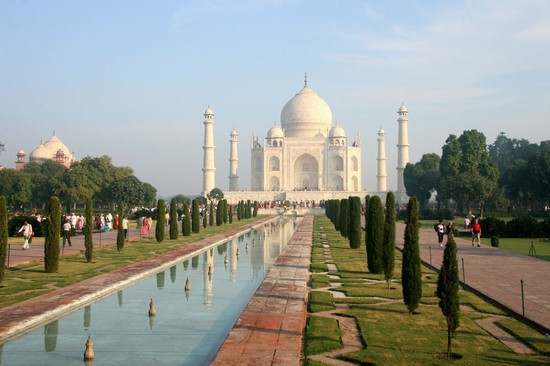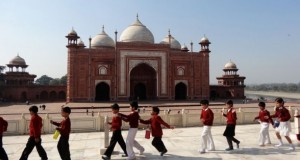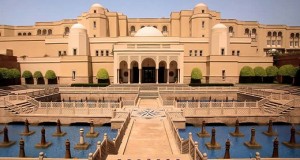Review Overview
Most people visit Agra during the cooler winter months of October to March. Possibly the best month is October, when the town is wreathed in crimson bougainvillaea and yellow mustard, there is no dust, and the Taj, washed by the rains, gleams like a new pin.
ARRIVAL/DEPARTURE Air Indian Airlines flies daily from Agra to Delhi (Rs525), Khajuraho (Rs767), and Varanasi (Rs1106).
Rail There are daily trains from Agra Cantonment station to Delhi, Jaipur, Varanasi, and Jhansi (for Khajuraho).
Road Buses to Delhi, Jaipur and Khajuraho leave from Agra’s Idgah bus-stand. Cars can be hired from hotel travel desks or one of the larger travel agents in the town.
Rooms, artificial fountains and a cascade, the walls enriched with badly renovated mirror-work, was once the bath-house of the zenana (women’s) quarters. The final stop of the day is the ‘Crown of Palaces’, the Taj Mahal. Many people visit this essential symbol of India fully prepared to be disappointed. But few are. Them most photographed, filmed, drawn and described building in the world, it is one of those few rare places in India which consistently meets (even exceeds) expectations. The secret of its success lies largely in its simplicity. True beauty, as its architect Shah Jahan proved, needs no ornament; it is essentially pure and simple.
The Taj is the most accomplished monument to love the world has ever seen. It was the creation of Shah Jahan, built to immortalise the memory of his beloved wife, Mumtaz Mahal, who died tragically in 1631 giving birth to her 14th child. He intended it to be the culminating masterpiece of his many buildings and so used the best artisans to ensure the highest possible quality of design and craftsmanship. An incredible 20 000 workmen laboured day and night for 22 years to bring it to completion. One of the less charming myths surrounding its construction is that many of the principal architects and sculptors lost their hands afterwards lest they should ever build such a masterpiece again.
The main mausoleum went up first, 22 tons of white marble inlaid with semi-precious stones. Then, because no tomb was complete without one, a mosque was added. A ‘dummy’ mosque, to provide symmetry, appeared on the right side. Then the gardens were laid out, and the gigantic red-sandstone entrance gate was built. It was inscribed with Koranic texts in letters that appeared totally uniform in size, whether viewed at the top or the bottom. And on the tomb itself was inscribed Shah Jahan’s tragic prayer: ‘Help us, 0 Lord, to bear that which we cannot bear’.
You don’t have to be a romantic to fall in lovewith the Taj—it moves even hardened cynics. The smooth white marble has a supple, sensual quality that has visitors compulsively stroking and touching it or standing back to photograph it. Much of the attraction, as one traveller observed, has to do with coming face-to-face with something which one always has associated with India, ever since a child reading storybooks, yet somehow never expected to be real. It’s one of those few times in life when fantasy and reality perfectly coincide.





